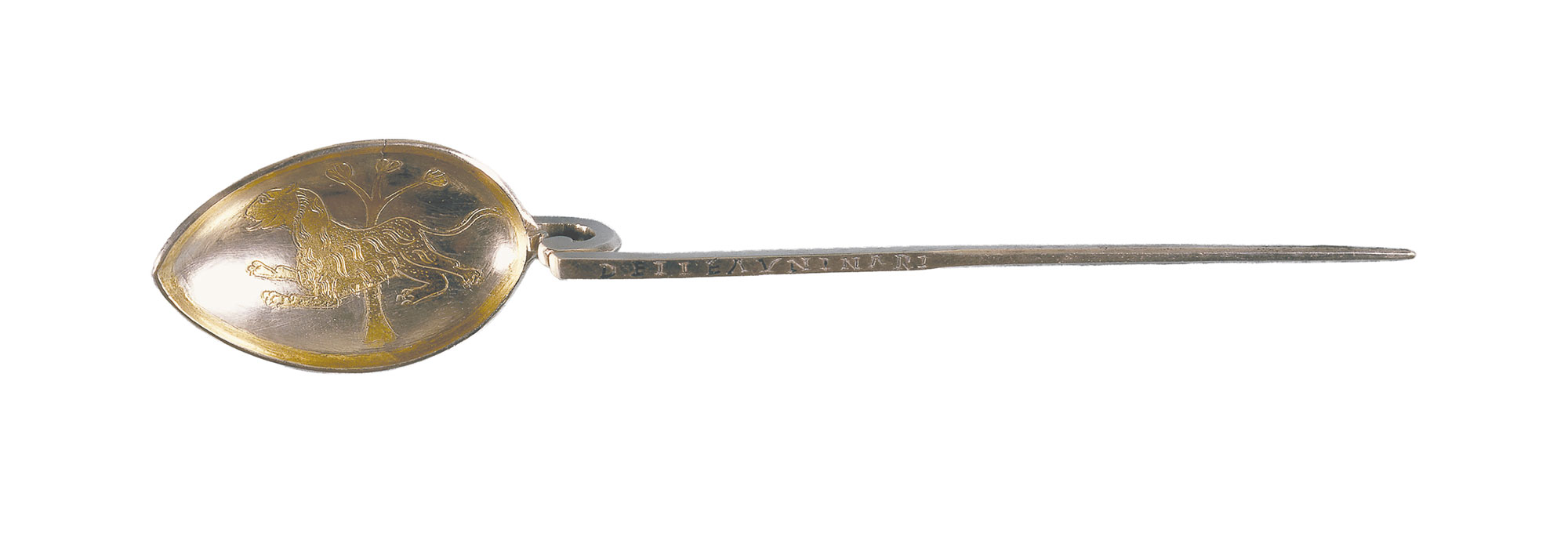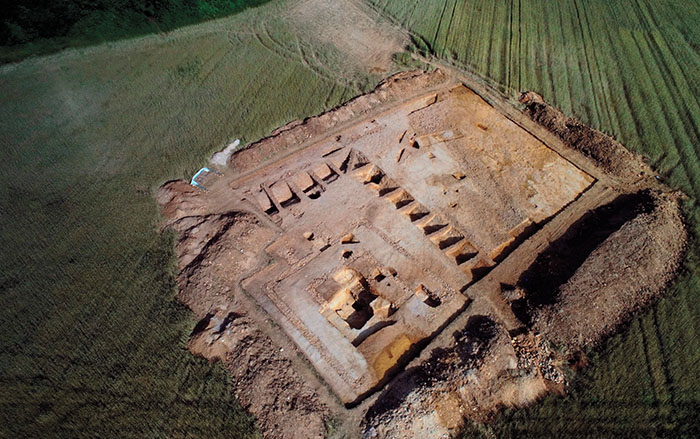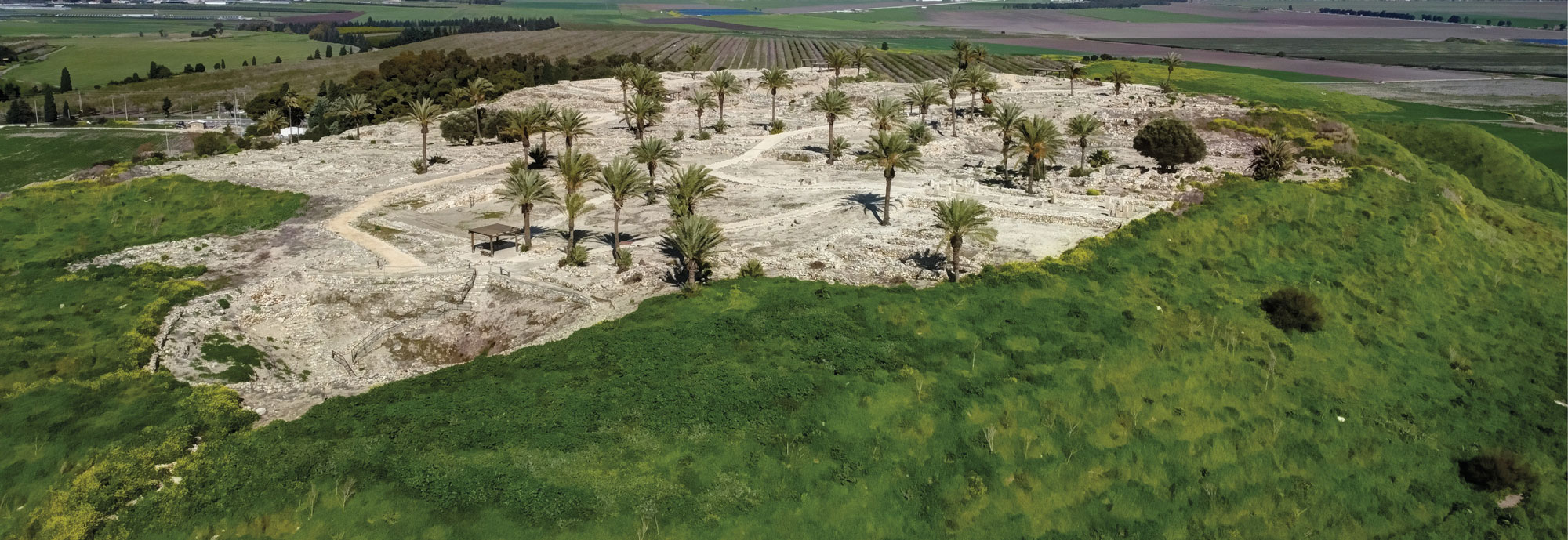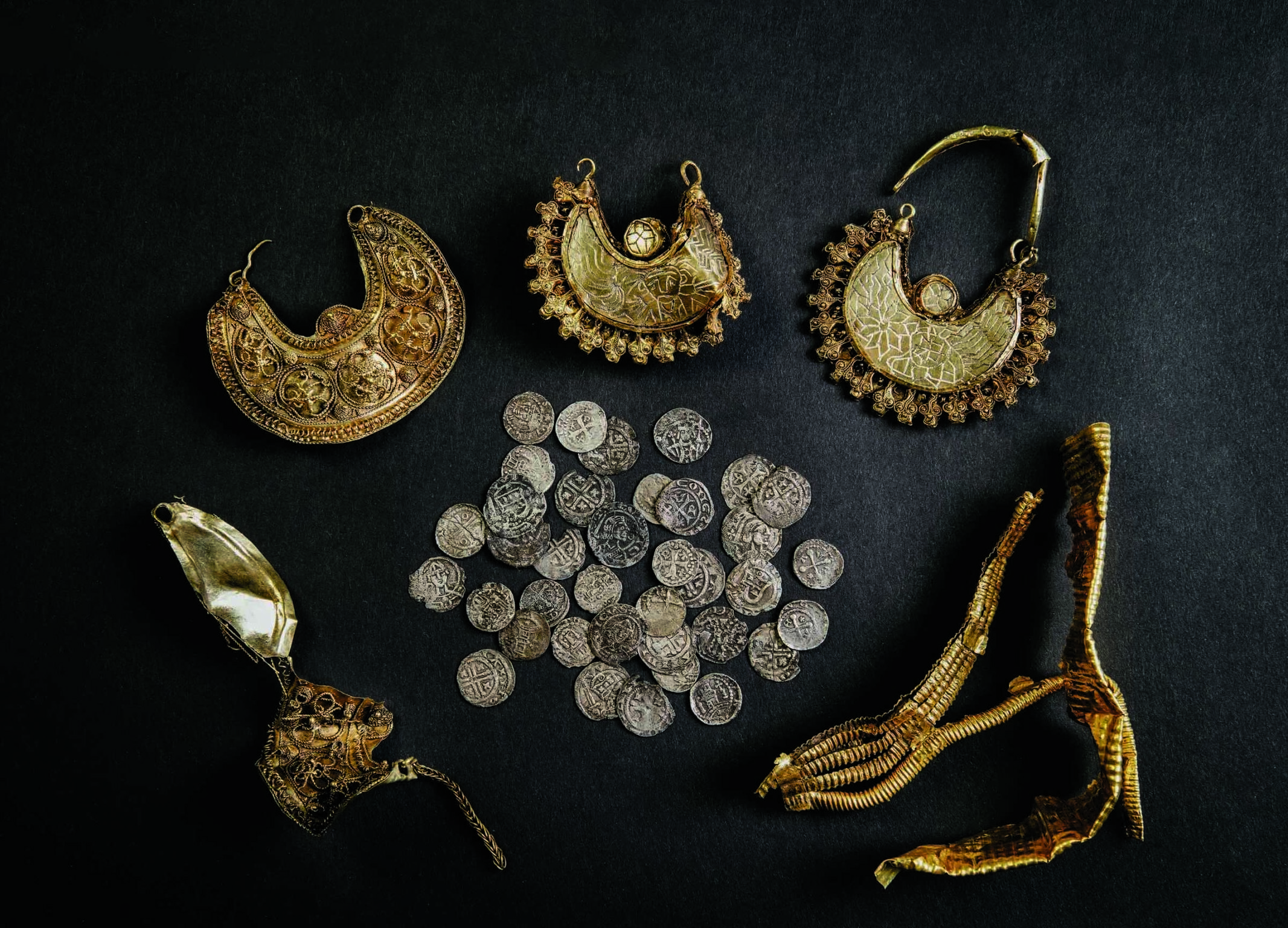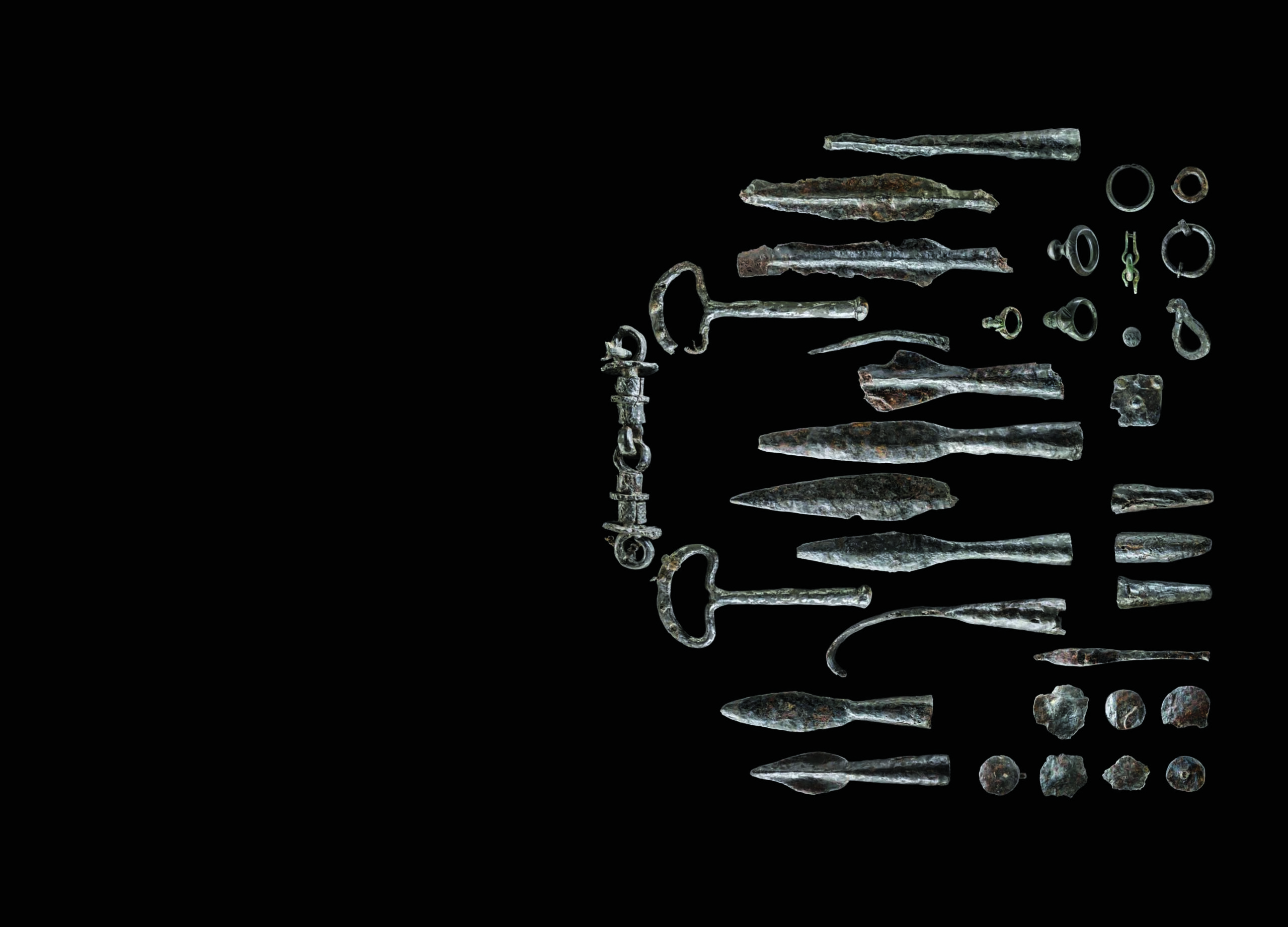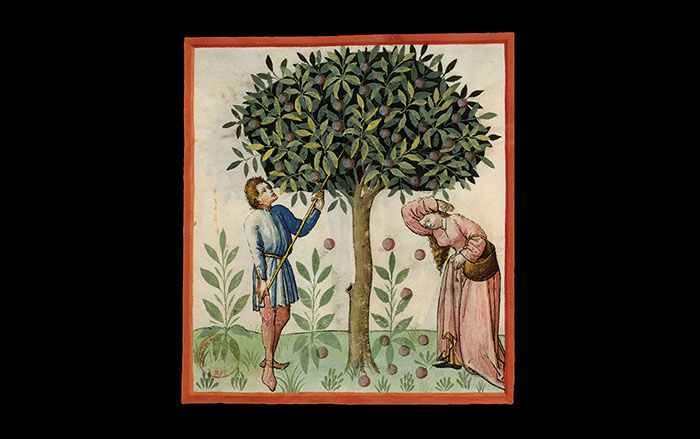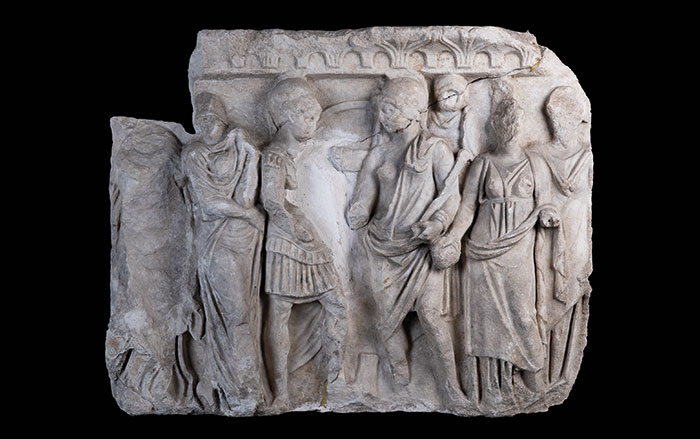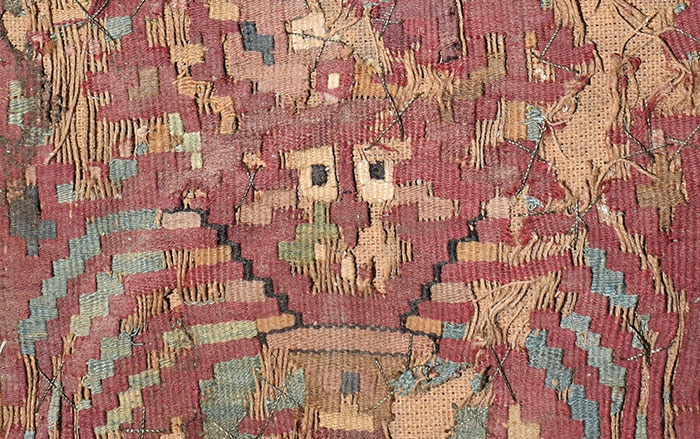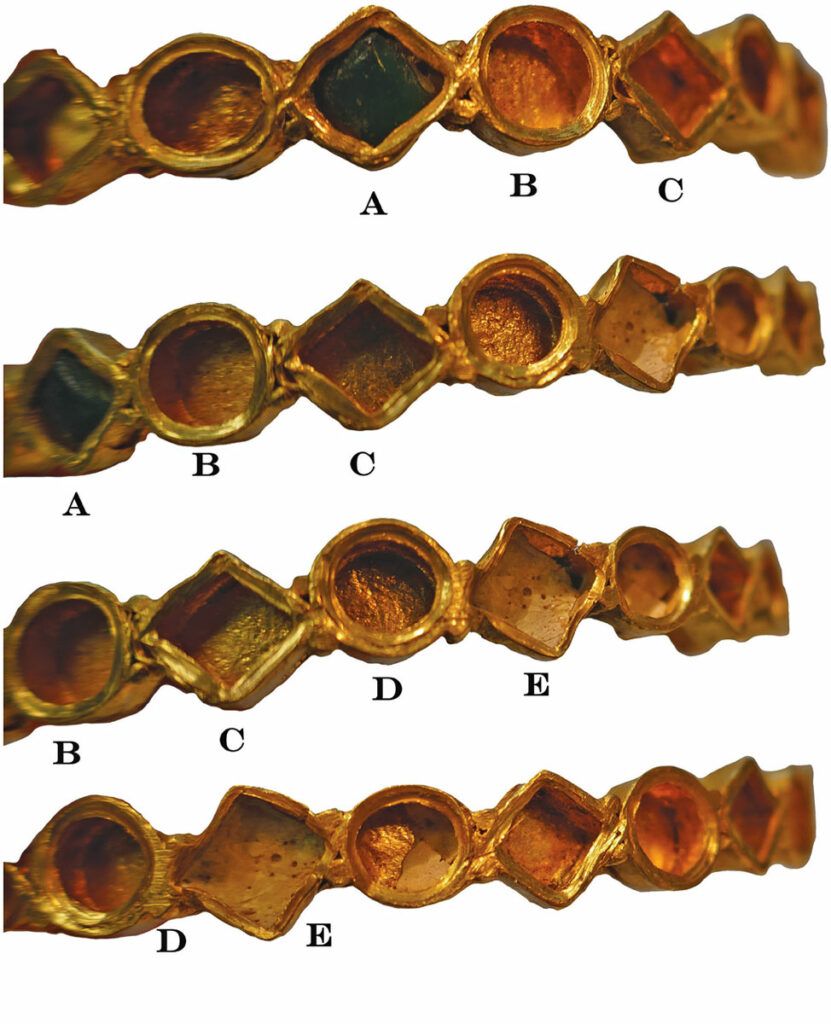
THETFORD, ENGLAND—In 1979, a metal detectorist illicitly investigating a site on Gallows Hill happened upon a trove of ancient gold and silver artifacts. Now known as the Thetford treasure, the hoard consisted of 81 objects, including 22 gold rings, various other pieces of gold jewelry, and 36 silver spoons or strainers. No coins were found among the objects, which made dating their deposition difficult, but experts estimated they were buried sometime in the late fourth century a.d. However, Sci News reports that new research into the treasure is revising that date, which has subsequently challenged long-held assumptions about the religious landscape of late Roman Britain. University of Kent archaeologist Ellen Swift carefully reexamined the objects’ typology and paid special attention to symbols and inscriptions engraved on the silver spoons. By comparing them to other known finds from Britain and Europe, she discovered that many of the objects could not have been made until the fifth century. In addition, the markings on the spoons are commonly associated with pagan traditions, meaning that Christianity did not reach East Anglia until later than previously thought. Furthermore, the objects were proven to have originated from diverse locations across Roman-era Europe, indicating that the settlement that continued to thrive there was not economically isolated either. “The re-dating of the Thetford hoard suggests a pagan cult center survived there into the fifth century a.d.,” Swift said. “The site’s economic assets, indicated by the value and variety of the hoard, also show that it may have wielded significant power and authority locally.” Read the original scholarly article about this research in Journal of Roman Archaeology. To read about the rise of Anglo-Saxon kings in East Anglia and other regions of Britain, go to "Ancient Tax Time: The Kings' Dues."


